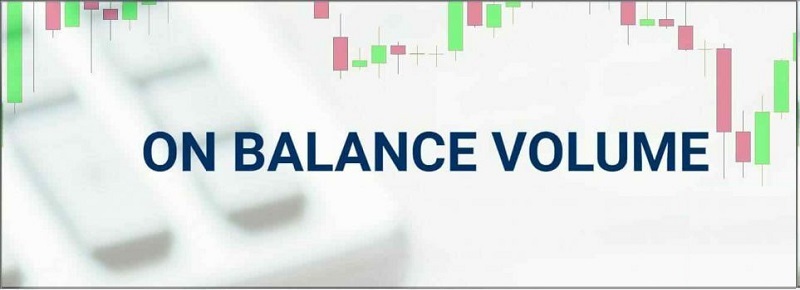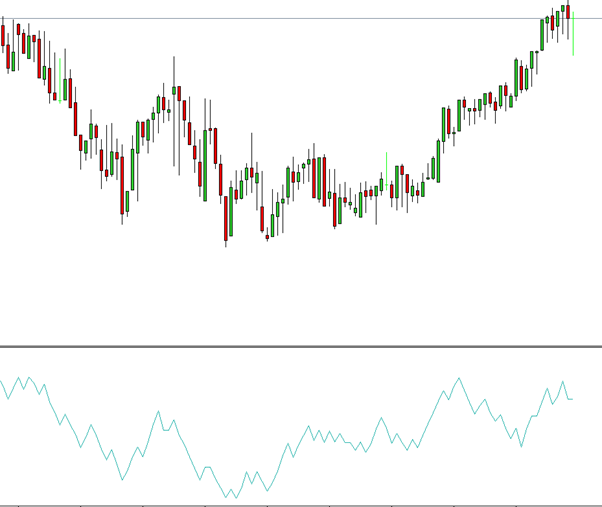What is On-Balance Volume (OBV)? | Definition and Application

The On Balance Volume indicator is integrated into the standard package of Meta Trader terminal algorithms, so it is available to all users of this program. The tool is designed to determine the balance volume of the market. It is a dynamic algorithm that constantly changes its readings depending on the price of the trading asset and total market volumes. Let's consider in detail the principle of work of OBV indicator, signals, and ways of trade on its basis.
Description of the On Balance Volume Indicator
The On Balance Volume trend indicator was introduced by the famous trading theorist and practitioner Joseph Granville in his book "New Strategy on the Stock Market" in 1963, but even today this indicator is still relevant and one of the most popular.
When creating the On Balance Volume indicator, Granville proceeded from the fact that the driving force of financial markets is volume, and volume parameters can be used to build strategies.
In particular, Granville noticed that when volume increases or decreases sharply, there will soon be a change in the price of an asset. This happens because big players make volume purchases while small players sell. When the big players have "bought up" enough, they send the price storming to new heights.

The On Balance Volume formula is simple and is cited in many sources:
- If, for example, today's closing price is higher than yesterday's closing price, the OBV is equal to the sum of the previous OBV and the volume of that period: OBV i = OBV i-1 + Volume i;
- If today's closing price is lower than yesterday's closing price, OBV is equal to the difference between the previous OBV and the volume of the period: OBV i = OBV i-1 - Volume i;
- If yesterday's and today's closing prices are equal, then OBV is equal to the previous OBV: OBV i = OBV i-1.
Where:
- OBV i - On Balance Volume for the current period;
- OBV i-1 - On Balance Volume during the previous period;
- VOLUME i - the volume of the current candle.
The key feature of the indicator is that it operates only with the trading volumes, and not with the prices. Prices are important for On Balance Volume only as an additional parameter.
Graphically, the indicator looks like a curve, which shows the dynamics of the accumulation of trading volume.
The OBV calculation does not suppose averaging, that is why its values are synchronous with the price and may be ahead of the price. On Balance Volume indicator is used for determining the main market trend and for anticipatory determination of trend reversals.
It is a simple enough indicator, and the only set parameter in the terminals is period prices - closing or opening prices, extrema, and median prices. t is considered that the most effective use of the indicator is on hourly timeframes, 4-hour, daily, and weekly time frames.
How to Read and Apply the On Balance Volume Indicator
The application of volume indicators in forex trading causes difficulties. These indicators were created for the stock exchange, where you can see the volume of the traded asset. In forex, you can't see what currency is being bought or sold during trading. Volume indicators are needed to determine the volume of trades, volume indicators will not tell you anything about the direction.
The interpretation of indicator signals itself is not very clear, but there are some rules of interpretation for forex trading. Thus, if it is noticed that trading volumes decrease, it means that interest in the pair decreases, and this may herald either change of trend or price stabilization. On the contrary, if trading operations' volume increases we can suppose that interest in the asset is increasing, and it can mean either strengthening of the trend or a reversal.
If the trading volume decreases gradually over a long enough time, we can expect a sharp price change.
If you can see peaks on the indicator charts, you can expect a trend reversal soon.
These are quite fuzzy signals that can be interpreted very broadly. Therefore, such tools are used with additional indicators. The OBV indicator can give several types of signals. Thus, if the OBV indicator updates extremums consistently according to the main trend, the trend will continue.
If the price rises faster than On Balance Volume updates extremums, it means that it is not confirmed by the growth of volumes and it is likely to return to its previous values. If the price updates extrema but the OBV does not, it means that the trend is fading and we should wait for the reversal. Many traders believe that in reality, the On Balance Volume indicator gives only one meaningful signal - precisely for a trend reversal.
Discrepancies in the indicator and price dynamics are called divergences. The OBV indicator can show bullish and bearish divergences. A bullish divergence signal is when the subsequent peak is higher than the previous one, but the price chart shows the next peak is lower than the previous one. A bearish divergence signal - is when the indicator shows the next peak lower than the previous one, but the price chart shows the next peak higher than the previous one.
When there is a sharp change in trading volume, it is indicated on the OBV indicator as a sharp rise or fall of the line. If a sharp change is noted at a local high after a rapid price increase or at a local low after a rapid price decrease, it is a signal of a trend reversal. The reversal is confirmed by an additional OBV signal in the same direction. Optimally, if such signals appear at important resistance and support levels, then they can be used to enter the trade.
If the indicator moves long enough without peaks and troughs in the conditional "corridor" of indicators, it shows the uncertainty of the trend. It finishes with the change of trend on the uptrend or downtrend, this moment is called a breakout.
At the same time, an uptrend is considered an uptrend even if the uptrend changes indefinitely again and remains so for two periods, and then returns to the uptrend.
In any case, the OBV indicator often generates false signals, so we should wait for confirmation during several periods in which the indicator continues to move or not. When a breakout occurs, the signal to buy will be a reversal of the indicator upwards, and the signal to sell will be a reversal of the indicator downwards.
It is believed that after opening a position on the OBV signals, it should be held until the complete change of the trend. Even if the OVB indicator generates clear signals, they are not very accurate to rely only on them to open positions. The optimal thing is to use the OVB to confirm the strength or weakness of the trend and to see a reversal. Everything else is done with other indicators and oscillators. In addition, it is proven in practice that On Balance Volume should be better applied on daily charts.
On Balance Volume Trading Strategies
One example of the application of On Balance Volume is in the strategy with the RSI indicator during the flat movement. The Relative Strength Index (RSI) shows the momentum, i.e. the speed and amplitude of price change, indicating the strength of the trend and the probability of reversal.
In the strategy, the OBV indicator is used to identify the support and resistance lines, when the flat ends and a new trend is formed. When the OBV gives the appropriate signal, positions are opened when the RSI indicator exits overbought/oversold zones in the direction of the new trend. Accordingly, we place long positions on an uptrend and open short ones on a downtrend.
Only during the flat, the strategy is implemented, in which the OBV indicator is complemented by Stochastic. The flat trend is set with the help of the volume indicator, the moment of the price location in one of the overbought or oversold areas is determined by Stochastic with standard settings. This system works optimally on low-volatility assets.
The most commonly used strategy is On Balance Volume in combination with a Simple Moving Average. Volume is placed on the chart, then the MA, for example, with a period of 120. The MA gives simple clear signals, if it is directed upwards, the market is dominated by buyers, if it is directed downwards, the market is dominated by sellers.
The OBV indicator allows to clarify the signals and to open orders more confidently. Thus, a signal to buy will be the On Balance Volume line crossing the Moving Average from bottom to top. On the contrary, a signal to sell will be a crossing of the Moving Average by the volume indicator from top to bottom. Any other indicator can be added to this strategy, which would give confirmation signals for placing orders.
The same approach is practiced in combination with other trend indicators such as CCI. OBV together with other volume indicators will help to analyze the market situation more precisely and thus enable to place orders more effectively. For example, there is a strategy that uses OBV and A/D, an Accumulation/Distribution indicator.
Some traders state that On Balance Volume can be used for paradoxical trading where any abnormal indicator reading is noted. It is seen as an indicator of most traders' errors and can indicate a trend reversal. Under the terms of this strategy, such an anomaly is a signal to enter the trade against the trend.
Conclusion
The On Balance Volume indicator is a simple, but quite informative and useful tool, which gives a clearer picture of what is happening on the market. The main advantage of the indicator for trading is that it can generate anticipatory signals which can be used to build trading systems in combination with other indicators.
As a signal provider, this indicator is most effective when trading in medium and long-term time frames. But it is problematic to work with OBV only and if carried out, some traders recommend implementing a strategy with two indicators on two screens with different time frames. Of the disadvantages, it can be noted that this indicator was created for the stock market, it can generate a lot of false signals during forex trading.
Often, the difficulty for traders is to understand that the numerical values of the indicator have no practical value, and it is necessary to look at the behavior of the curve. Overall, it is one of the most useful a tool that provides information for thought, not for placing trades with it.









